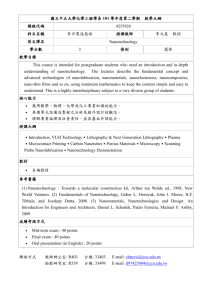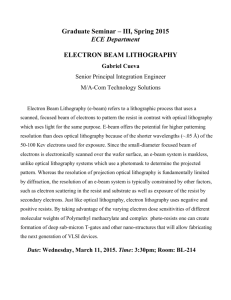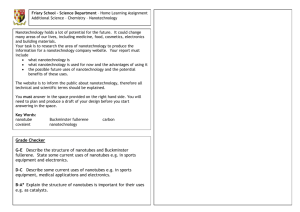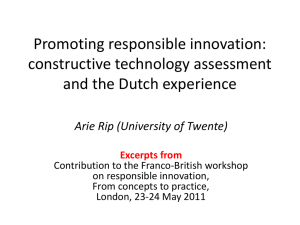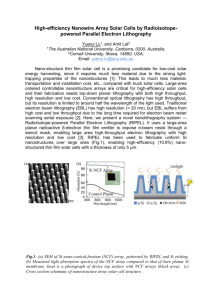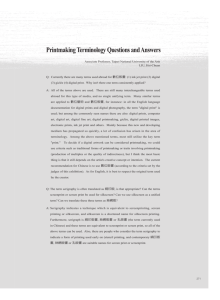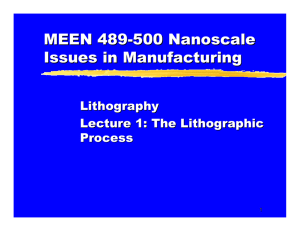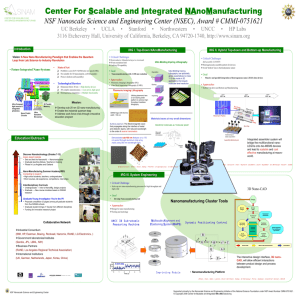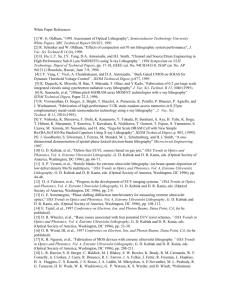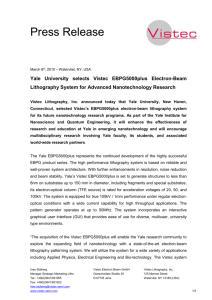Mikell P. Groover 2013 Chapter 33 NANOFABRICATION
advertisement
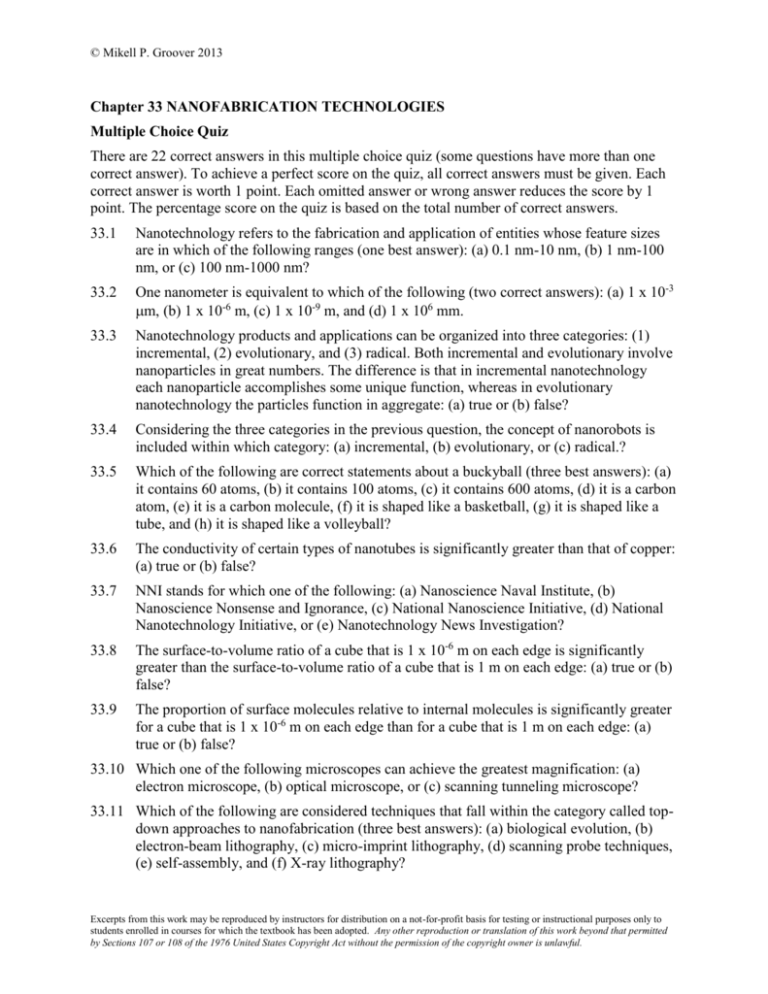
© Mikell P. Groover 2013 Chapter 33 NANOFABRICATION TECHNOLOGIES Multiple Choice Quiz There are 22 correct answers in this multiple choice quiz (some questions have more than one correct answer). To achieve a perfect score on the quiz, all correct answers must be given. Each correct answer is worth 1 point. Each omitted answer or wrong answer reduces the score by 1 point. The percentage score on the quiz is based on the total number of correct answers. 33.1 Nanotechnology refers to the fabrication and application of entities whose feature sizes are in which of the following ranges (one best answer): (a) 0.1 nm-10 nm, (b) 1 nm-100 nm, or (c) 100 nm-1000 nm? 33.2 One nanometer is equivalent to which of the following (two correct answers): (a) 1 x 10-3 m, (b) 1 x 10-6 m, (c) 1 x 10-9 m, and (d) 1 x 106 mm. 33.3 Nanotechnology products and applications can be organized into three categories: (1) incremental, (2) evolutionary, and (3) radical. Both incremental and evolutionary involve nanoparticles in great numbers. The difference is that in incremental nanotechnology each nanoparticle accomplishes some unique function, whereas in evolutionary nanotechnology the particles function in aggregate: (a) true or (b) false? 33.4 Considering the three categories in the previous question, the concept of nanorobots is included within which category: (a) incremental, (b) evolutionary, or (c) radical.? 33.5 Which of the following are correct statements about a buckyball (three best answers): (a) it contains 60 atoms, (b) it contains 100 atoms, (c) it contains 600 atoms, (d) it is a carbon atom, (e) it is a carbon molecule, (f) it is shaped like a basketball, (g) it is shaped like a tube, and (h) it is shaped like a volleyball? 33.6 The conductivity of certain types of nanotubes is significantly greater than that of copper: (a) true or (b) false? 33.7 NNI stands for which one of the following: (a) Nanoscience Naval Institute, (b) Nanoscience Nonsense and Ignorance, (c) National Nanoscience Initiative, (d) National Nanotechnology Initiative, or (e) Nanotechnology News Investigation? 33.8 The surface-to-volume ratio of a cube that is 1 x 10-6 m on each edge is significantly greater than the surface-to-volume ratio of a cube that is 1 m on each edge: (a) true or (b) false? 33.9 The proportion of surface molecules relative to internal molecules is significantly greater for a cube that is 1 x 10-6 m on each edge than for a cube that is 1 m on each edge: (a) true or (b) false? 33.10 Which one of the following microscopes can achieve the greatest magnification: (a) electron microscope, (b) optical microscope, or (c) scanning tunneling microscope? 33.11 Which of the following are considered techniques that fall within the category called topdown approaches to nanofabrication (three best answers): (a) biological evolution, (b) electron-beam lithography, (c) micro-imprint lithography, (d) scanning probe techniques, (e) self-assembly, and (f) X-ray lithography? Excerpts from this work may be reproduced by instructors for distribution on a not-for-profit basis for testing or instructional purposes only to students enrolled in courses for which the textbook has been adopted. Any other reproduction or translation of this work beyond that permitted by Sections 107 or 108 of the 1976 United States Copyright Act without the permission of the copyright owner is unlawful. © Mikell P. Groover 2013 33.12 Which of the following are considered techniques that fall within the category called bottom-up approaches to nanofabrication (three best answers): (a) electron beam lithography, (b) extreme ultraviolet lithography, (c) chemical vapor deposition to produce carbon nanotubes, (d) nano-imprint lithography, (e) scanning probe techniques, (f) selfassembly, and (g) X-ray lithography? 33.13 Which of the three methods of producing carbon nanotubes has the advantage that it can be operated continuously, which makes it attractive for mass production: (a) carbon arc technique, (b) chemical vapor deposition, or (c) laser evaporation method? 33.14 Dip-pen nanolithography uses which one of the following techniques and/or devices: (a) atomic force microscope, (b) chemical vapor deposition, (c) electron beam lithography, (d) nano-imprint lithography, or (e) self-assembly? 33.15 A self-assembled monolayer has a thickness that is which one of the following: (a) one micrometer, (b) one millimeter, (c) one molecule, or (d) one nanometer? Excerpts from this work may be reproduced by instructors for distribution on a not-for-profit basis for testing or instructional purposes only to students enrolled in courses for which the textbook has been adopted. Any other reproduction or translation of this work beyond that permitted by Sections 107 or 108 of the 1976 United States Copyright Act without the permission of the copyright owner is unlawful.
